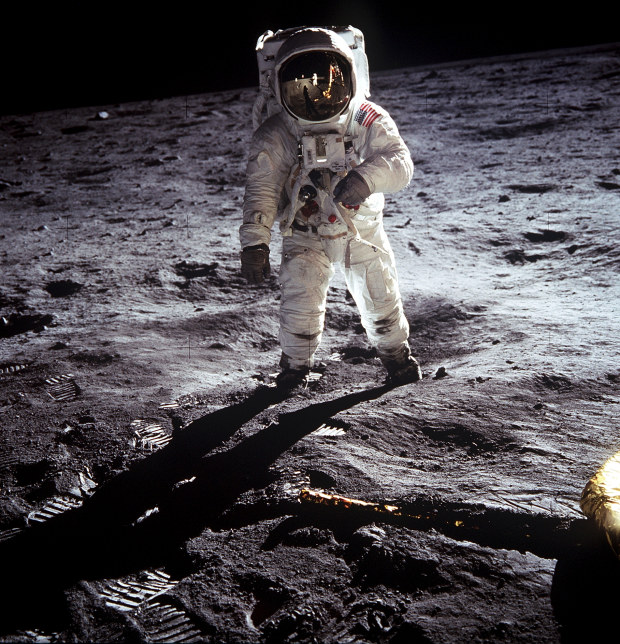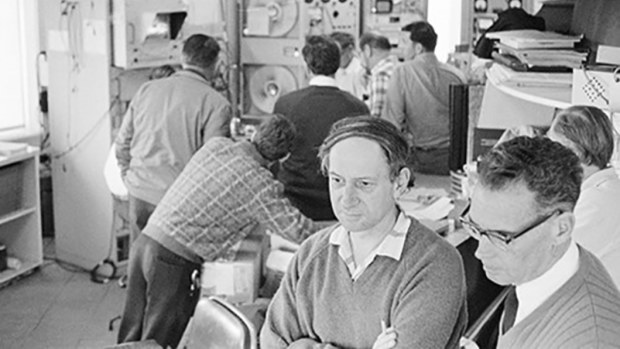Wanted: Australian mining know-how for moon, Mars missions

Washington | Australian resources industry giants such as BHP and Rio Tinto could soon play a crucial role in NASA's Mars mission, building and operating mines on the moon to extract rocket fuel for interplanetary travel.
In an interview with The Australian Financial Review on Tuesday (Wednesday AEST), NASA's top boss, administrator Jim Bridenstine, urged Australian mining companies to grasp the opportunity and challenge of applying the industry's expertise in remote resource extraction to the moon.
Known inside NASA as Artemis (the twin sister of Apollo in Greek mythology) the lunar missions will rely on turning hundreds of millions of tons of mined water ice recently discovered on the moon into liquid forms of hydrogen and oxygen to power spacecraft.
"That autonomous capability of extracting resources is something that Australia has in its toolkit," Mr Bridenstine said.
"And it's something that we could definitely figure out how to include in the architecture for long-duration stays on the moon, which would be a tremendously valuable addition."
With the Australian Space Agency entering its second year of operation, moves are underway to launch in coming months an organisation that would pull together Australian industry, science and government to build extractive technology for space.
Pamela Melroy, a former space shuttle commander and director of space technology and policy at Adelaide-based Nova Systems - an engineering and management services provider - hinted at the involvement of the Australian mining industry.
Colonel Melroy told the Financial Review the goal was to create an organisation that could over the next four to five years lead a project on Australia's behalf. She was speaking at an event hosted by the Australian embassy in Washington to mark the 50th anniversary of Australia's involvement in the 1969 Apollo program moon landings.
"We are founding partners in an arrangement that has not yet been announced to pull together industry, academia and government to develop an institute of some kind," she said.

Walking on the the moon. NASA wants to mine the moon for rocket fuel. CSIRO
"I've found all the people I need. I'm very happy with where we are and there will be some announcements probably in the next couple of months."
Colonel Melroy said that unlike NASA, which she described as a "frankly giant monstrosity", Australia's Space Agency can pursue a different model. Its size and agility should allow it to harness private sector know-how and expertise from academia to drive Australia's involvement in the Mars missions.
"Megan Clark, the head of the space agency said 'I need this to self-organise. I can then go and advocate for funding'," she said.
While the Australian agency will act as a funding funnel, and rely on the Commonwealth Scientific and Industrial Research Organisation (CSRIO) for technical support, Colonel Melroy said: "They really need an organisation that's capable of pulling off sending autonomous extractors to the moon, digging out some water and handing it to our international partners for fuel."
The wider prize for Australians may well be that a young girl in the Northern Territory or the Pilbara could one day fly into space or land on the moon, she said.
"This is how it works, right. If you bring enough to the table, then you get crew time, you get astronauts.
"The great thing about the US is they're working on the transportation system, so Australia doesn't have to build that rocket."
President Donald Trump used his Fourth of July speech at the Lincoln Memorial in Washington last week to honour the Apollo 11 moon landing and renew his pledge that "we're going to be back on the moon very soon, and, someday soon, we will plant the American flag on Mars".
Mr Bridenstine said the president's directive to NASA is to go to the moon with "international partners" in a way that allows for lengthy stays on Earth's biggest satellite.
"So the question is, how do you stay on the moon for long periods of time?," he said in the interview.
"Well, we need to utilise the resources of the moon. Hundreds of millions of tons of water ice on the south pole of the moon represent air to breathe, water to drink and rocket fuel."
"Hydrogen and oxygen in cryogenic liquid form is the same rocket fuel that powered the space shuttles. And it's available on the moon in hundreds of millions of tons, and probably more, we just don't know yet."
NASA plans to shuttle that fuel source to a small space station orbiting the moon called the Gateway that will propel reusable lunar landers.
Australia's Space Agency has already hinted that it would like to contribute Australian technology towards robotics on the lunar Gateway, according to Colonel Melroy.
"I'm pushing further. I'm saying 'hey, the fact is that extractors coming from all of the world - they're made mostly in Scandinavia, Komatsu in Japan - when they get to Australia, Australia makes them autonomous and then integrates them into remote asset management'."

Parkes control room staff watch the moonwalk. CSIRO
NASA anticipates the moon mining operation and the Gateway station will ultimately become the launching pads for an Mars mission.
"The challenge with Mars is that you have to stay there for a couple of years, just because we're in different orbits around the Sun," Mr Bridenstine said.
"Something can go wrong on the way to the moon, something can go wrong at the moon, and you can come home safely. We know that because we proved it on Apollo 13.
"If something were to happen on the way to Mars it would be over."
While the full cost of such vastly complex moon and Mars missions is an question for a time and galaxy far, far away - given America's yawning budget deficit - China's growing activity in the field is stoking the Trump administration's ambitions for deep space.
Asked whether he had concerns about China's advances - including its historic landing recently of a spacecraft on the "dark side" of the moon - Mr Bridenstine rattled off a long list of recent US achievements and milestones.
These include this year's landing of the InSight probe on the far side of Mars, the eighth such landing; and the positioning of a probe into orbit around a deep space asteroid, which will soon land and "grab a piece" before it completes the first ever asteroid-to-earth return mission.
"So I would argue that we are in no way, shape or form falling behind," he said. "In fact, we are moving ahead."
Mr Bridenstine added that while current US law prevented NASA from working with China in space, the door could one day open, perhaps as part of a broader deal between Beijing and Washington - on trade, say.
"To the extent that China partners with us it will be because I would imagine somebody well above my pay-grade struck a deal," he said.
"That would include items that go beyond space exploration. It could be trade, it could be a whole host of different things."
In the meantime, Mr Bridenstine is focused on the big mission ahead.
"That vision includes Australia and we're excited about figuring out ways that Australia can be part of the next moon mission and eventually missions to Mars."
He expects Australia's involvement to ultimately involve a government-to-government partnership. "Then, together, we're able to accomplish more on the moon than either country could do alone."
Subscribe to gift this article
Gift 5 articles to anyone you choose each month when you subscribe.
Subscribe nowAlready a subscriber?
Introducing your Newsfeed
Follow the topics, people and companies that matter to you.
Find out moreRead More
Latest In North America
Fetching latest articles